Plant Index
Lonicera sempervirens
Lonicera sempervirens L.
coral honeysuckle, trumpet honeysuckle
Synonym(s): Lonicera sempervirens var. hirsutula, Lonicera sempervirens var. minor, Lonicera sempervirens var. sempervirens, Phenianthus sempervirensCultivar(s): Cedar Lane, John Clayton, Leo, Major Wheeler, Pink, Sulphurea

Image ID: 12980
Image by: Cressler, Alan M.
Image Collection: NCBG Digital Library
PLANT INDEX
ID_PLANT: LOSESCIENTIFIC NAME: Lonicera sempervirens
Include in WOTAS: 0
Publish to Web: 1
Last Modified: 2019-02-12
CULTIVAR INDEX
| Cult_id | Cultivar_name | Action |
| 632 | Cedar Lane | View |
| 30 | John Clayton | View |
| 177 | Leo | View |
| 10 | Major Wheeler | View |
| 633 | Pink | View |
| 634 | Sulphurea | View |
GENUS INDEX
GENUS CODE: LONICGENUS SCIENTIFIC: Lonicera
GENUS AUTHORITY: L.
GENUS COMMON: Honeysuckle
GENUS SUMMARY: A genus of about 180 species, shrubs and vines, mainly north temperate.
GENUS IDENTIFICATION:
GENUS REFERENCES: Ferguson (1966a)=Z; Rehder (1903)=Y; Green (1966).
FAMILY INDEX
FAMILY CODE: CAPRIFFAMILY SCIENTIFIC: Caprifoliaceae
FAMILY AUTHORITY: A.L. de Jussieu 1789
FAMILY COMMON: Honeysuckle Family
FAMILY SUMMARY: As here broadly circumscribed, a family of about 30 genera and 900 species, shrubs, lianas, herbs, nearly cosmopolitan, but mainly north temperate and boreal. Circumscription of the family is controversial. Various segregate families (or reassignments) of taxa traditionally placed in the Caprifoliaceae have been proposed, including the transfer of Sambucus and Viburnum to the Adoxaceae, placement of Diervilla and Weigela in the Diervillaceae (Backlund & Pyck 1998), placement of Abelia and Linnaea in the Linnaeaceae (Backlund & Pyck 1998; Pyck et al. 2002), and retention of Lonicera, Symphoricarpos, and Triosteum in a much more narrowly circumscribed Caprifoliaceae. Alternatively, all these taxa could be included in the Caprifoliaceae, along with Dipsacaceae and Valerianaceae, as a more broadly circumscribed Caprifoliaceae (APG III 2009), a circumscription followed here.
FAMILY REFERENCE: Backlund & Pyck (1998); Pyck et al. (2002); Ferguson (1966a); Bell (2004); Ferguson (1965).
NCBG DESCRIPTIVES
INTRO:STEMS:
LEAVES:
INFLORESCENCE:
FLOWERS:
FRUITS:
COMMENTS:
HEIGHT: Climbs 8-10 ft. or more
DURATION: Perennial
HABIT: Vine
LEAF ARRANGEMENT: Opposite
LEAF COMPLEXITY: Simple
LEAF RETENTION: Evergreen
FLORAL CHARACTERISTICS
SYMMETRY:
BLOOM TIME: Mar-July (and sporadically to Nov)
| Jan | Feb | Mar | Apr | May | Jun | Jul | Aug | Sep | Oct | Nov | Dec |
| x | x | x | x | x | x | x | x | x | x |
BLOOM COLOR: Red flowers
| White | Red | Pink | Orange | Yellow | Green | Blue | Lavender | Purple | Violet | Brown | Not Applicable |
| x | x |
FRUITING PERIOD: Jul-Sep.
DISTRIBUTION
HABITAT TYPE:
NATIVE RANGE: eastern United States
HORTICULTURAL
Plant Sale Text: Clusters of rosy red trumpet-shaped flowers adorn this evergreen vine in early summer. Its foliage is a glossy deep bluish-green and its red berries add ornamental appeal in the fall. Coral honeysuckle is a fine vine to grow on fences, trellises, or mailbox posts. You and the hummingbirds will love it! (Do not confuse this well-behaved native vine with the better-known but invasive Japanese honeysuckle.)
Bloom Table Text: Unlike Japanese honeysuckle, coral honeysuckle is native to North Carolina and is non-invasive. It has a long bloom period, beginning in spring and continuing sporadically throughout the summer. The flowers are adored by hummingbirds, butterflies, and bees, and the fruits are an important food source for several species of bird. It may become even more valuable as more hummingbirds appear to be remaining in our area through the winter months. Coral honeysuckle also serves as a larval food for the spring azure butterfly. Excellent cultivars, Lonicera ‘Major Wheeler,’ known for its especially early and ample blooms and a yellow selection,‘John Clayton’ are two you will see here at NCBG.
NCBG Location: Children's Wonder Garden, Education Center landscape, Totten Center Landscape
Cultural Notes:
SOIL MOISTURE: Dry, Average, Moist/Wet
LIGHT EXPOSURE: Sun, Part Shade, Shade
MINIMUM HARDINESS ZONE: 4
MAXIMUM HARDINESS ZONE: 9
GERMINATION CODE:
WILDLIFE VALUE: Bee Friendly, Butterfly Friendly, Hummingbird Friendly
DEER RESISTANCE:
GRIM COLLECTIONS
| Coll_id | Project | Collection date | Collector | Action |
| 1422 | HORT | 2006-10-14 | Bryan | View |
| 1767 | HORT | 2005-10-05 | Bryan | View |
| 1885 | HORT | 2011-01-01 | Gocke | View |
GRIM ACCESSIONS
| acc_id | acc_num | acc_dt | coll_id | Action |
| 2462 | 1986-2303 | View | ||
| 2906 | 1987-0439 | View | ||
| 3618 | 1991-0294 | View | ||
| 3710 | 1991-0405 | View | ||
| 4592 | 1992-0748 | View | ||
| 4965 | 1995-0083 | View | ||
| 5152 | 1995-0271 | View | ||
| 5541 | 1995-0664 | View | ||
| 6181 | 1995-1313 | View | ||
| 6452 | 1996-0072 | View | ||
| 6454 | 1996-0074 | View | ||
| 6459 | 1996-0079 | View | ||
| 6460 | 1996-0080 | View | ||
| 6617 | 1996-0252 | View | ||
| 6763 | 1996-0424 | View | ||
| 6817 | 1998-0022 | View | ||
| 6818 | 1998-0023 | View | ||
| 6966 | 1998-0175 | View | ||
| 7001 | 1998-0230 | View | ||
| 8480 | 2005-0574 | 2006-09-21 | View | |
| 8481 | 2005-0575 | 2006-09-21 | View | |
| 8875 | 2011-0206 | 2011-10-14 | 1885 | View |
| 9630 | 2023-0073 | 2023-04-24 | 0 | View |
GRIM PLANTINGS
| plt_num | acc_id | loc_num | pers_num | inst_dt | Action |
| 985 | 8875 | 42 | NCBG staff | 2011-11-02 | View |
| 4176 | 2462 | 142 | NCBG staff | 1967-12-31 | View |
| 4177 | 2462 | 27 | NCBG staff | 1986-12-31 | View |
| 4178 | 2462 | 27 | NCBG staff | 1986-12-31 | View |
| 4179 | 2462 | 115 | NCBG staff | 1999-05-01 | View |
| 4817 | 2906 | 8 | NCBG staff | 1983-07-07 | View |
| 5912 | 3618 | 143 | NCBG staff | 0000-00-00 | View |
| 6014 | 3710 | 199 | NCBG staff | 0000-00-00 | View |
| 6921 | 4592 | 200 | NCBG staff | 1993-03-01 | View |
| 7384 | 4965 | 202 | NCBG staff | 1992-01-01 | View |
| 7578 | 5152 | 203 | NCBG staff | 1992-01-01 | View |
| 8055 | 5541 | 204 | NCBG staff | 1993-01-01 | View |
| 8836 | 6181 | 2 | NCBG staff | 0000-00-00 | View |
| 9120 | 6452 | 146 | NCBG staff | 0000-00-00 | View |
| 9123 | 6454 | 146 | NCBG staff | 0000-00-00 | View |
| 9135 | 6459 | 146 | NCBG staff | 0000-00-00 | View |
| 9136 | 6459 | 146 | NCBG staff | 0000-00-00 | View |
| 9345 | 6617 | 142 | NCBG staff | 1967-12-31 | View |
| 9346 | 6617 | 160 | NCBG staff | 1967-12-31 | View |
| 9347 | 6617 | 115 | NCBG staff | 1997-06-15 | View |
| 9556 | 6763 | 8 | NCBG staff | 1996-03-28 | View |
| 9644 | 6817 | 154 | NCBG staff | 1997-10-28 | View |
| 9645 | 6817 | 162 | NCBG staff | 1997-10-28 | View |
| 9646 | 6817 | 166 | NCBG staff | 1997-10-28 | View |
| 9647 | 6817 | 173 | NCBG staff | 1997-10-28 | View |
| 9648 | 6818 | 160 | NCBG staff | 1997-11-07 | View |
| 9836 | 6966 | 160 | NCBG staff | 1998-04-22 | View |
| 9837 | 6966 | 166 | NCBG staff | 1998-04-22 | View |
| 9876 | 7001 | 8 | NCBG staff | 1996-10-16 | View |
| 11710 | 8480 | 160 | NCBG staff | 2005-09-01 | View |
| 11711 | 8481 | 160 | NCBG staff | 2005-09-01 | View |
| 13562 | 9630 | 20 | Liloia | 2023-04-06 | View |
| 13563 | 9630 | 94 | Liloia | 2023-04-06 | View |
| 13564 | 9630 | 14 | Liloia | 2023-04-06 | View |
| 13565 | 9630 | 12 | Liloia | 2023-04-06 | View |
| 13614 | 0 | 60 | Liloia | 0000-00-00 | View |
| 13855 | 0 | 77 | Liloia | 0000-00-00 | View |
USDA PLANTS DATABASE
USDA Symbol: LOSEUSDA Common Name: Trumpet Honeysuckle
Native Status: L48 (N), CAN (I)
Distribution: USA (AL, AR, CT, DC, DE, FL, GA, IA, IL, IN, KS, KY, LA, MA, MD, ME, MI, MO, MS, NC, NH, NJ, NY, OH, OK, PA, RI, SC, TN, TX, VA, VT, WV), CAN (ON, QC)
Duration: Perennial
Growth Habit: Vine
NATIONAL WETLAND INDICATOR STATUS
| Region: | AGCP | AK | AW | CB | EMP | GP | HI | MW | NCNE | WMVE |
| Status: | FACU | FACU | FAC | FACU | FACU |
WEAKLEY FLORA
SCIENTIFIC NAME: Lonicera sempervirensCOMMON NAME: Coral Honeysuckle, Trumpet Honeysuckle
SYNONYMY: [= GW, Il, Pa, RAB, Va, W, WH3, WV, Z; > L. sempervirens Linnaeus var. sempervirens - C, F, G, K, Y; > L. sempervirens Linnaeus var. hirsutula Rehder - C, F, G, K, Y; > L. sempervirens var. minor Aiton - F; = Phenianthus sempervirens (Linnaeus) Rafinesque - S]
PHENOLOGY: Mar-Jul (and sporadically to Nov); Jul-Sep.
HABITAT: Dry forests and woodlands, maritime forests.
COMMENTS: CT to OH and OK, south to c. peninsular FL and TX; and more widely distributed as an escape from cultivation. Var. hirsutula has sometimes been maintained, differing from var. sempervirens in its ciliate leaf margins, pubescent upper leaf surfaces, sometimes glandular hypanthia and stems (vs. glabrous); it is doubtful that these distinctions are taxonomically meaningful.
RANGE MAP: Lonicera sempervirens.png

Key to Map Symbols
ABOUT FAMILY (Weakley Flora)
Caprifoliaceae A.L. de Jussieu 1789 (Honeysuckle Family)
SUMMARY: As here broadly circumscribed, a family of about 30 genera and 900 species, shrubs, lianas, herbs, nearly cosmopolitan, but mainly north temperate and boreal. Circumscription of the family is controversial. Various segregate families (or reassignments) of taxa traditionally placed in the Caprifoliaceae have been proposed, including the transfer of Sambucus and Viburnum to the Adoxaceae, placement of Diervilla and Weigela in the Diervillaceae (Backlund & Pyck 1998), placement of Abelia and Linnaea in the Linnaeaceae (Backlund & Pyck 1998; Pyck et al. 2002), and retention of Lonicera, Symphoricarpos, and Triosteum in a much more narrowly circumscribed Caprifoliaceae. Alternatively, all these taxa could be included in the Caprifoliaceae, along with Dipsacaceae and Valerianaceae, as a more broadly circumscribed Caprifoliaceae (APG III 2009), a circumscription followed here.
REFERENCE: Backlund & Pyck (1998); Pyck et al. (2002); Ferguson (1966a); Bell (2004); Ferguson (1965).
ABOUT GENUS (Weakley Flora)
Lonicera L. (Honeysuckle)
SUMMARY: A genus of about 180 species, shrubs and vines, mainly north temperate.
REFERENCE: Ferguson (1966a)=Z; Rehder (1903)=Y; Green (1966).
HERBARIUM RESOURCES
SERNEC: Find Lonicera sempervirens in Southeast Regional Network of Experts and Collections (if available)UNC SERNEC: Find Lonicera sempervirens in University of North Carolina Chapel Hill Herbarium - Southeast Regional Network of Experts and Collections (if available)
WEB RESOURCES
USDA: Find Lonicera sempervirens in USDA PlantsNPIN: Find Lonicera sempervirens in NPIN Database
FNA: Find Lonicera sempervirens in the Flora of North America (if available)
Google: Search Google for Lonicera sempervirens
IMAGE USE RECORDS
ID IMAGE: 12980 - Primary Image FloraQuest Plant Detail Page (Landscape Preferred)ID IMAGE1: 12980 - Primary Image WOTAS
ID IMAGE2: 2935 - Secondary Image WOTAS
ID IMAGE3: 12980 - Primary Image Plant Sale Sign (Landscape Only)
ID IMAGE4: 0 - Primary Image New Plant Sale Label (Portrait Only)
From the Image Gallery
 Image ID: 37799 |
 Image ID: 29579 |
 Image ID: 37800 |
 Image ID: 37801 |
 Image ID: 82691 |
 Image ID: 2935 |
 Image ID: 95198 |
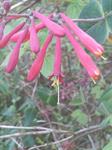 Image ID: 7343 |
 Image ID: 7345 |
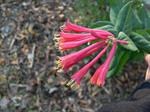 Image ID: 57384 |
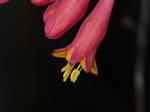 Image ID: 57388 |
 Image ID: 57387 |
 Image ID: 57386 |
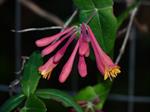 Image ID: 57385 |
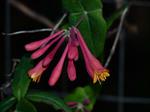 Image ID: 57391 |
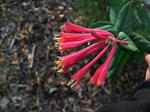 Image ID: 57383 |
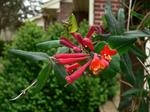 Image ID: 57382 |
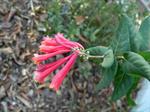 Image ID: 57381 |
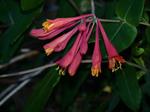 Image ID: 57380 |
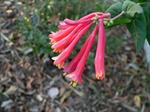 Image ID: 57379 |
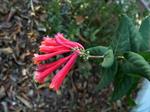 Image ID: 57378 |
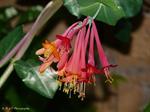 Image ID: 57377 |
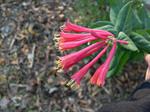 Image ID: 57376 |
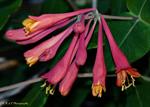 Image ID: 57389 |
 Image ID: 57390 |
 Image ID: 57374 |
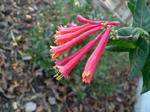 Image ID: 57392 |
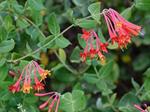 Image ID: 95197 |
 Image ID: 95199 |
 Image ID: 95200 |
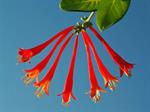 Image ID: 95201 |
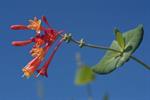 Image ID: 95202 |
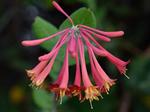 Image ID: 95203 |
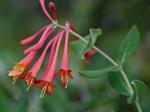 Image ID: 95204 |
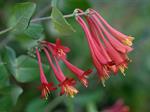 Image ID: 95205 |
 Image ID: 95206 |
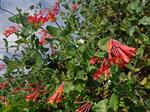 Image ID: 95207 |
 Image ID: 95208 |
 Image ID: 95209 |
 Image ID: 2927 |
 Image ID: 2928 |
 Image ID: 2929 |
 Image ID: 2930 |
 Image ID: 2931 |
 Image ID: 2932 |
 Image ID: 2933 |
 Image ID: 2934 |
 Image ID: 4925 |
 Image ID: 7344 |
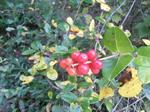 Image ID: 8642 |
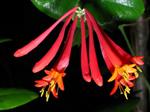 Image ID: 12981 |
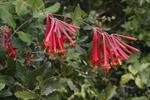 Image ID: 15440 |
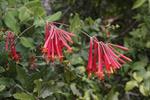 Image ID: 15441 |
 Image ID: 20277 |
 Image ID: 29578 |
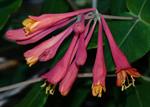 Image ID: 57375 |
 Image ID: 57373 |
 Image ID: 57372 |
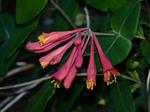 Image ID: 57371 |
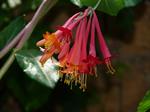 Image ID: 57370 |
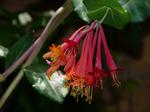 Image ID: 57369 |
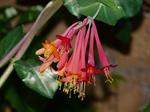 Image ID: 57368 |
 Image ID: 57367 |
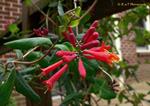 Image ID: 57366 |
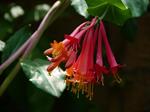 Image ID: 57365 |
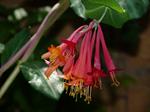 Image ID: 57364 |
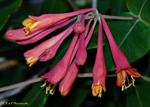 Image ID: 57363 |
 Image ID: 29580 |
 Image ID: 29577 |
 Image ID: 11436 |
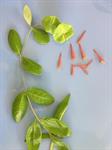 Image ID: 71611 |
 Image ID: 71610 |
 Image ID: 71609 |
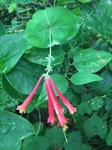 Image ID: 71608 |
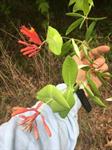 Image ID: 71607 |